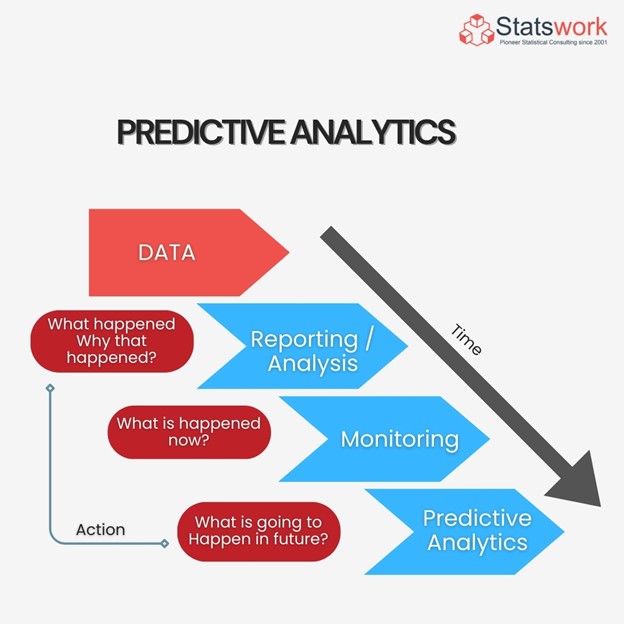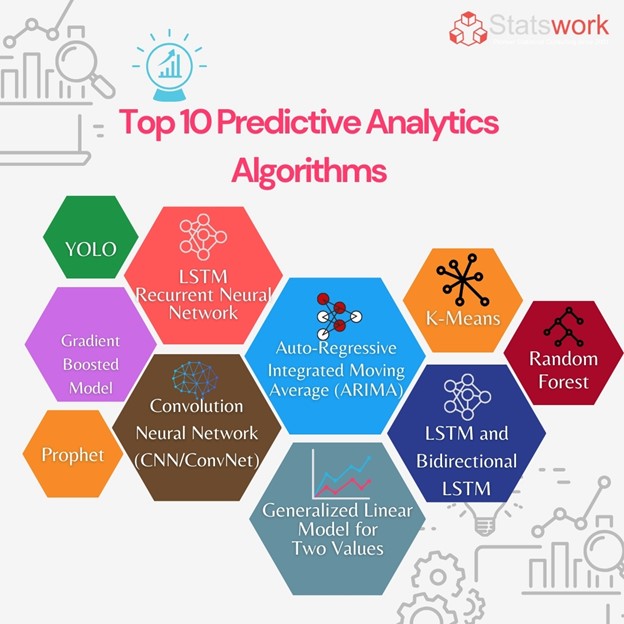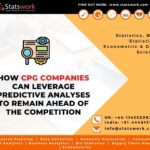The Future is Now: The Potential of Predictive Analytics Models and Algorithms
Introduction
To succeed in today’s competitive business world, having access to valuable data is crucial. Data has become a key asset, and one powerful tool in the data analytics arsenal is predictive analytics. This statistical data mining solution uses algorithms and techniques to analyze both structured and unstructured data to predict future outcomes [1]. This technology has been around for decades and is widely used in various industries. Predictive analytics has helped many companies take their business intelligence to the next level by providing insights, whether predicting customer behavior, optimizing operations, or guiding strategic decisions, these models stand as the lead of connecting the predictive power inherent in data analytics.
The Power of Linear Regression in Predictive Analytics
The most elementary method of predictive analysis is the linear regression model. This model presumes that the value of an unknown variable will increase or decrease linearly with the value of a known variable. Linear regression models are useful for predicting straightforward relationships and their future trends, such as expanding a customer base. Despite its simplicity, linear regression remains a potent and valuable tool in predictive analytics, providing a strong foundation for understanding and forecasting relationships in data.
It is a statistical approach used for creating models that reveal the relationship between one or more independent variables and a dependent variable. [2]
Due to its simplicity and interpretability, linear regression is commonly utilized in predictive analysis. It enables analysts to interpret the linear relationship between variables and, based on that understanding, they make predictions. The method involves identifying the coefficients that minimize the difference between the expected values and the actual values of the dependent variable. Once the model is trained, it can be utilized to anticipate future outcomes or learn the impact of changes in the independent variables.

Decision Trees in Predictive Analytics
The decision tree is a simple classification tool used in supervised learning to sort data records into predefined categories by applying specific conditions in a decision-making process. The tree-like structure consists of nodes representing decision points and branches representing possible outcomes. [3]
A specific feature is considered at every node, which leads to either a final prediction or a subsequent node. The algorithm aims to minimize impurity or uncertainty in each node, which guides the decision-making process.
The decision tree keeps growing until a specific stopping condition is reached, such as a particular depth or purity level. When making forecasts, input data traverse the tree from the starting point to the end, where the ultimate verdict or outcome is decided.
Each branch in the decision tree corresponds to a specific rule or condition, and the path taken through the tree represents the logical flow of decisions.
Decision trees are widely used in various domains due to their versatility and ability to handle both classification and regression tasks effectively. Additionally, they are easy to understand and interpret.

Random Forest: The Versatile Machine Learning Powerhouse
Random Forest is a popular algorithm for ensemble learning that adds complexity to the world of predictive analytics. The algorithm constructs multiple decision trees during training. At the time of testing, their predictions are averaged to decrease the failings of individual trees.
Random Forest is known for its toughness against overfitting, which makes it an excellent choice for complex tasks, as it can handle large datasets with numerous features.
However, there are some concerns about the algorithm’s interpretability, as the combination of trees can turn the model into a black box.
This makes it difficult for analysts to understand the justification behind specific predictions. The computational cost of training multiple trees and the potential for increased complexity may lead to longer processing times.
Despite these concerns, Random Forest remains a potent tool in predictive analytics, and analysts should weigh its benefits and potential drawbacks to select the optimal model.
Neural Networks: Pattern Recognition and Predictive Analytics
Neural networks are computer systems designed to learn and make predictions inspired by the human brain. At the heart of neural networks are nodes and artificial neurons connected in layers.
The real magic of neural networks happens in the hidden layers, where complex patterns and relationships within the data are uncovered. Through a series of mathematical transformations, the neural network learns to extract relevant features and representations from the input data and maps this information to output predictions. This learning process is facilitated by an optimization algorithm that adjusts the weights between the nodes, minimizing the difference between predicted and actual outcomes.
Once the neural network is trained, it becomes an effective tool for making predictions. It can generalize patterns from the training data and apply this knowledge to make predictions on new, unseen data. Neural networks are widely used in various domains, such as image and speech recognition, financial forecasting, and healthcare diagnostics.
Their ability to capture intricate patterns and adapt to complex datasets makes them invaluable assets in harnessing the predictive power hidden within large amounts of data. With advancements in technology, neural networks are continually evolving and pushing the boundaries of what is achievable in predictive analytics.
Predictive analysis is used in almost every field. Apart from some criticisms, when more information is available, it is possible to predict future outcomes with a fair degree of accuracy. Organizations and businesses can utilize this information to enhance their production by making well-informed decisions. Familiarizing oneself with the techniques of predictive analysis has become mandatory for professionals in data science and business analysis as it has numerous applications across every industry imaginable. The future of predictive analytics is bright, with ongoing advancements in algorithms, computing power, and data availability promising even more possibilities for accurate and reliable predictions.
StatsWork is the ultimate innovation hub where insights meet creativity. Our team of skilled statisticians and data experts specialize in transforming raw data into a strategic asset that drives your success. We take pride in finding hidden trends, predicting future outcomes, and giving you a competitive edge in your industry. With our seamless data collection, rigorous cleaning, powerful statistical modeling, and advanced mining algorithms, we offer a one-stop solution for unlocking the true potential of your data. We don’t just crunch numbers; we craft narratives that tell your data’s unique story and drive decision-making. So, are you ready to revolutionize the way you control data? Connect with StatsWork now, and let us help you unlock the key to your next breakthrough. Trust us; your data will be thankful!
Reference:
- Halper, F. (2014). Predictive analytics for business advantage. TDWI Research, 1-32.
- Ogunleye, J. O. (2022). Predictive data analysis using linear regression and random forest. In Data Integrity and Data Governance. IntechOpen.
- Lee, C. S., Cheang, P. Y. S., & Moslehpour, M. (2022). Predictive analytics in business analytics: decision tree. Advances in Decision Sciences, 26(1), 1-29.



 Previous Post
Previous Post